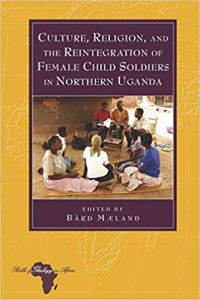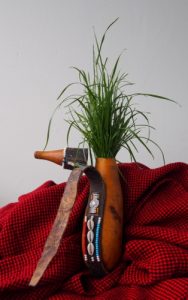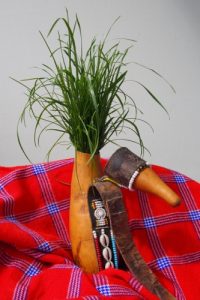Due to the Summer Solstice celebrations tomorrow, my Swedish lesson with Lennart was today. Some days I feel that I’m on a plateau and not advancing. Yes, after the busy travel and grading time, I can put some more effort into daily Swedish lessons, but I wish it wasn’t such an uphill climb all the time.
One of the tasks today was to create a picture for the cover of my book. The production editor stated that I could put a small picture on the cover. Here’s an example of the series cover with a photo.

The publisher requires signed permission forms and all in the photo have to sign “model” permission forms. So, the easiest thing is to not have people in the photo. My first idea would be to have a Maasai blessing, where a child comes to an elder, and the elder’s hand on the head is a blessing. But too many logistics and forms to secure. Another option was to have a Maasai cross. They are beautiful and distinctive, but this is not really a match for an Old Testament themed book. Finally, with support from my PhD adviser, I decided on having a Maasai gourd with grass out of the top. The decorated gourds are the Maasai water bottles and milk containers. Which of these 2 options do you like best?


This grass topped small gourd is what Father Ned used in his enculturated blessing during a Roman Catholic worship service we observed in Endulen, Tanzania. The gourd is filled with water that has a drop of milk in it. The water and milk solution is sprinkled out in a spray over the congregation. The grass is a sign of peace. Frans Mol describes the powerful significance of grass for the Maasai.
Grass is of prime importance in the life of the pastoral Maasai. The extent of their reverence for grass may be measured by the fact that in the days of Maasai raids on other tribes, they would spare the life of anyone who held up a tuft of grass, for this was a sign of peace and surrender. Small wonder, then, that the tying of grass plays a significant role in various rituals and blessings.[1]
The sprinkling of the water is like the rain, and rain is understood to be a manifestation of the monotheistic creator, Engai. My informant Miterienanka clarified, “We see Engai through the sun. We see Engai through the rain; especially the rain. When it rains, we literally say, ‘Engai has come,’ because another name for rain is Engai.”[2] Anthropologist Paul Spencer writes, “Nowhere is their dependence on God more apparent than in the arbitrary gift of rainfall which is so essential to their pastoral economy.”[3] Rain is a life-giving blessing that comes from heaven and waters the grass in order to feed the cows which sustain the Maasai life.[4]
The Spiritan Brothers have beautifully enfolded symbols of the Maasai into their worship.
So, let me know which photo seems stronger to represent these concepts. The different plaid cloths are traditional Maasai blankets.
With blessings,
Beth
[1]Frans Mol, Maasai Language & Culture: Dictionary (Lemek, Kenya: Maasai Centre Lemek, 1996), 62.
[2]2013.630 research participant, follow-up interview (Tanzania, 2013), 11.
[3]Paul Spencer, Time, Space, and the Unknown: Maasai Configurations of Power and Providence (New York: Routledge, 2003), 72.
[4]Vincent J. Donovan, Christianity Rediscovered (New York: Orbis, 1978), 43; Spencer, Time, Space, and the Unknown, 74.
Big plaid!
big plaid!
I like the Option #2 with the red color. I think it would be more of an “eye catcher” n someone’s coffee table, desk, or on a table in a book store. -Just a view of an old man who likes to see more color in life
Option 2 has better lighting. If the lighting can be improved, I would choose small plaid.